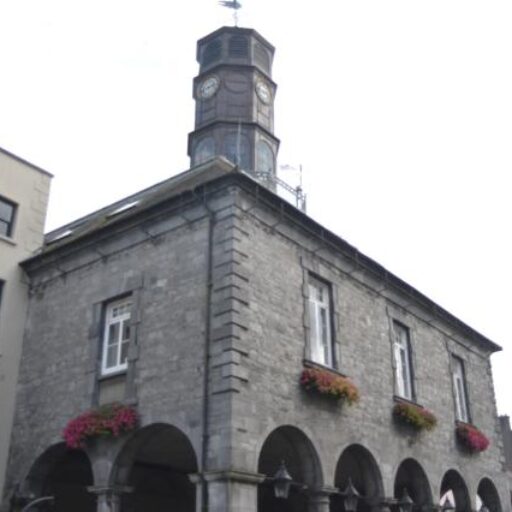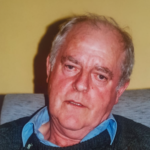
Ar Bhealach a Shlánaithe!
Buaileann na ‘Sopranos’ leis an ‘Apprentice’! B’in é an smaoineamh a bhí agam nuair a chonaic mé Michael Cohen ag tabhairt fianaise do Chomhdháil na Stát Aontaithe le déanaí. Saghas teilifís réaltachta atá ar siúl, ach ag an am céanna, tá a fhios agam gur eachtra stairiúil atá ar siúl, cosúil le cúrsaí Nixon sa seachtóidí.
D’éist mé le beagnach gach rud a tharla agus bhí cúpla rud aisteach le tabhairt faoi deara. Seo na rudaí is tábhachtaí a d’fhan liom tar éis na n-Éisteachtaí sin.
Iar-dhlíodóir an Uachtaráin Trump is ea Michael Cohen. Seo an fear a dúirt uair amháin go nglacfadh sé piléar don Uachtarán. Ach, ar chlár na mionn, ba scéal eile ar fad aige é. Rinne sé a lán rudaí a d’iarr Trump air a dhéanamh, nuair a bhí a fhios aige nach raibh siad ceart nó dlíthiúil. Agus cuirfear sa phríosún é ar feadh trí bliana dá mbarr.
Ag tús a fhianaise, leag sé síos an chaoi a mbeadh cúrsaí an chuid eile den lá, nuair a d’fhógair sé gan frapa gan taca faoin Uachtarán Trump: “Tá náire orm mar tá a fhios agam cén saghas duine é an tUasal Trump. Is ciníoch é, is cneámhaire é agus is séitéir é!” Focail thintrí ba ea iad sin, go háirithe nuair a thuigtear nach raibh sé ag caint faoi cheann feadhna ar bhuíon coirpeach, ach faoi Uachtarán Mheiriceá féin!
Thug Cohen a lán samplaí de rudaí dona ar chabhraigh sé le Trump iad a dhéanamh. Mhínigh sé a ról in a lán gníomhaíochtaí neamhcheadaithe, ó imeachtaí eastát réadach go ceannach portráid an Uachtaráin, ó litreacha bagracha faoi mharcanna an Trumpaigh ar scoil go híocaíochtaí Stormy Daniels!
D’inis sé dúinn faoi rudaí a chonaic sé á ndéanamh, agus ar chuala sé á rá ag an Uachtarán agus ag oibrí sa Teach Bán. I gcás amháin, nuair a bhí sé leis an Uachtarán ag tiomáint trí cheantar bocht i Chicago, dúirt an tUachtarán gurb iad na daoine gorma amháin a chaithfeadh a saol mar sin. I gcás eile, dúirt an tUachtarán go raibh an breithiúnas is measa ar domhan ag a mhac is sine, Donald Trump Junior. Bhí sé sin ag tagairt do chruinnithe leis na Rúisigh faoi Thúr Trump agus b’fhéidir faoi thoghchán na hUachtaránachta. I gcás eile fós, bhí a fhios roimh ré ag Trump faoi dhumpáil ríomhphost na nDaonlathach ó Wikileaks, mar chuala Cohen Trump agus Roger Stone ag caint faoi ar fón callaire cúpla lá roimh an sceitheadh sin.
Cé go bhfuil na liostaí thuas neamhiomlán, caithfidh tú a admháil nach bhfuil aon easpa eachtraí amhrasacha iontu!
Tar éis a ráiteas tosaigh, chuir Ionadaithe na Comhdhála ceisteanna ar Cohen. Dá mba Phoblachtánach Comhdhála a bhí ag cur ceisteanna, chuir sé/sí an bhéim go léir ar a phearsantacht, ag iarraidh a thaispeáint gur bhréagadóir a bhí ann, agus gur bréagadóir anois é freisin. Níor caitheadh mórán ama ag cosaint an Uachtaráin. Má ba Daonlathach Chomhdhála a bhí ann, chaith sé/sí a lán ama ag aontú le Cohen, agus ag ionsaí an Uachtaráin.
Tar éis na gceisteanna, dúirt Cohen an rud aisteach seo:
“Tá imní orm má theipeann air an toghchán a bhuachaint i 2020, nach mbeidh athrú cumhachta síochánta riamh ann agus sin an fáth ar aontaigh mé teacht os bhur gcomhair inniu.”
Bhí focail tábhachtacha le rá ag Cathaoirleach na hÉisteachta, Elijah Cummings (Daonlathach Maryland) ag an deireadh. Seo mar a dúirt sé:-
“Tá a fhios agam go raibh sé sin deacair. Tá a fhios agam go bhfuil dúshlán mór romhat. Tá a fhios agam go bhfuil tú imníoch ar son do chlainne. Ach is é seo cuid de do chinniúint. Agus tá súil againn go dtreoróidh an chuid seo de do chinniúint chuig an Michael Cohen is fearr, chuig an Donal Trump is fearr, chuig na Stáit Aontaite ís fearr, agus chuig domhan níos fearr dúinn uilig! Ó mo chroí istigh a thagann an ghuí sin. Nuair a bhímid ag damhsa leis na haingil, cuirfear an cheist, i 2019, céard a rinneamar chun a chinntiú go mbeadh ár ndaonlathas slán? Ar sheasamar ar leataobh gan tada a rá? Ar shuíomar fúinn?”
Nach cumhachtach na focail iad sin! Nach am ríthábhachtach é seo, nuair a tharlaíonn rudaí mar sin sa domhan, fiú amháin i Mheiriceá!
Tá an domhan go léir ag breathnú orainn anois, agus tá súil againn go ndéanfaimid mar ba cheart, agus mar ba chóir dúinn a dhéanamh.




